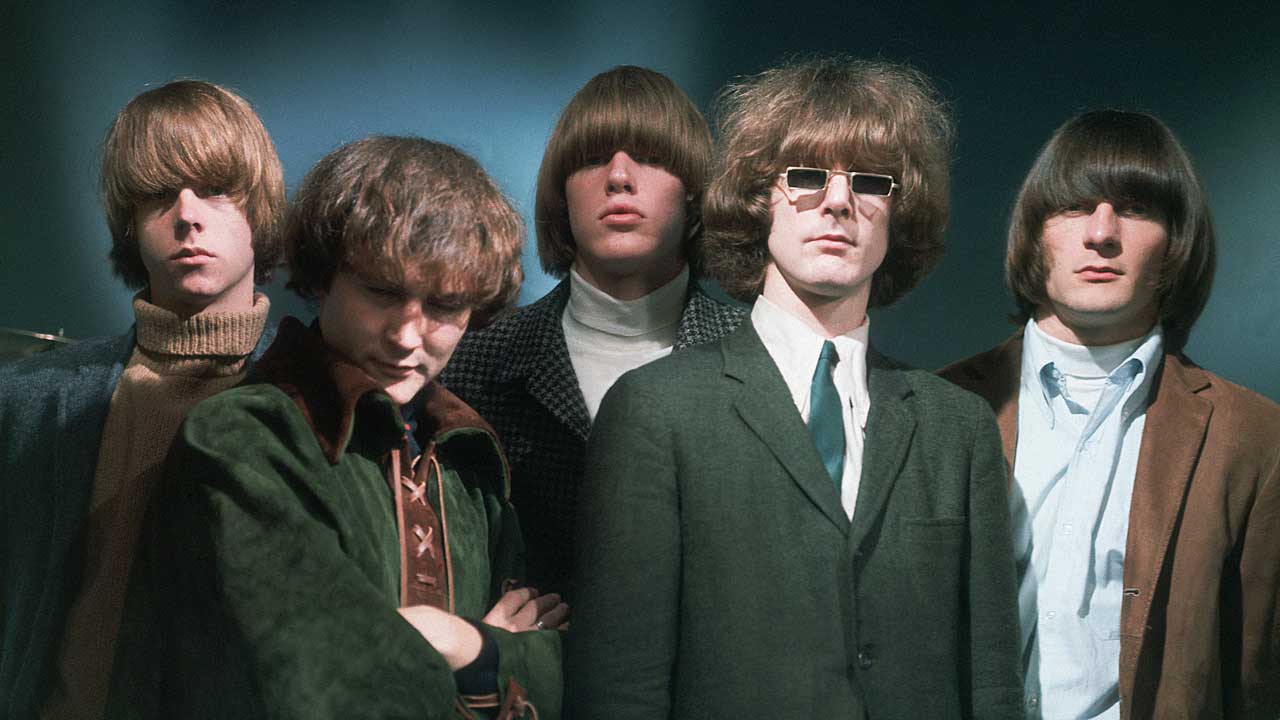The Byrds’ Gene Clark spent their first transatlantic flight, in August 1965, looking out of the window, watching as the Californian sunshine gave way to the drizzle of London. As the plane made its slow descent towards the rain-lashed runway of London Airport, Clark’s muse kicked in, and by the time The Byrds returned to America he had written some lyrics about the trip.
When The Byrds’ Eight Miles High was released in December 1965, it took little delving to identify the ‘rain-grey town, known for its sound’ as the London that Clark had observed from the plane. The reference to ‘signs in the street that say where you’re going’ was revealed as a dig at the random placing of street signs around the English capital, while ‘nowhere is there warmth to be found among those losing their ground’ was a nod to the hostility they encountered from The Birds, a British mod group who accused the band of stealing their name. That same flight also prompted the song’s title.
“We started it as Six Miles High,” guitarist Roger McGuinn recalls, “because that’s the approximate altitude that commercial airlines fly. Forty-two thousand feet – or about eight miles high – is the altitude reserved for military aircraft. But Gene said eight miles sounds better than six, and it did sound more poetic. It was also around the time of [The Beatles’] Eight Days A Week, so that was another hook.”
Eight Miles High represented a musical departure for The Byrds. While the verses were still carried by the harmonies of Clark, Roger McGuinn and David Crosby, the psychedelic intro and breakdown showed influences that had been buried on their covers of Bob Dylan songs.
“The bass intro is really borrowed from John Coltrane’s A Love Supreme,” bassist Chris Hillman admits. “And we were listening to a lot of Ravi Shankar.”
The Byrds originally recorded Eight Miles High at RCA’s Victor Studios, with Jim Dickson producing and Dave Hassinger as engineer. It was raw but powerful. The band were crushed to discover that their contract with CBS stipulated that the track could not be released because it had been cut at a non-Columbia studio.
For better or worse, Eight Miles High was promptly re-recorded with Allen Stanton producing. Asked whether it’s better, Hillman muses: “I’m not sure. The RCA version is more spontaneous. We tried to slip in the RCA version as the take from Columbia, but we got caught doing that.”
In April 1966, an innocuous sheet of paper landed on the desk of every radio programmer and disc jockey in America. Bill Gavin’s Record Report, a weekly ‘tip sheet’ that prescribed what stations should play, was a familiar sight among industry insiders. On this occasion, its tone was one of spluttering outrage. ‘We have dropped Eight Miles High from our recommended playlist,’ the report sniffed. ‘In our opinion, this record implies encouragement and/or approval of the use of marijuana or LSD.’
As a result, the single was banned in Houston, Baltimore and Washington, and stalled at its No.14 Billboard peak. Was Eight Miles High actually about drugs? Hillman insists otherwise: “I stand as witness,” the bassist says, “it was never about that. Everybody was getting crazy about marijuana use, so we were immediately branded. It was heading up the charts in the States until that tip sheet. I think the word ‘high’ did it. I think the inclusion of that word set the unenlightened going.”
“We could have called the song FortyTwo Thousand, Two Hundred And Forty Feet,” he added, of its controversial title, “but somehow that didn’t seem a very commercial song title, and it certainly wouldn’t have scanned.”
For all the band’s protestations, it seems naïve to conclude that Eight Miles High referred solely to altitude. Certainly The Byrds were taking drugs at this point, albeit not in the quantities that would creep in later.
“Cigarettes, a little marijuana, some drinks, a couple of acid things – that’s it,” Hillman recalls. “Gene was probably drinking coffee when he wrote that lyric.”
Perhaps the logical conclusion is that Eight Miles High refers to both the flight and drugs. It’s an argument that is strengthened by the slippery testimony of Crosby (his account changed whenever pressed on the subject).
“Of course it was a drug song,” he once claimed. “We were stoned when we wrote it. We can also justifiably say that it wasn’t a drug song because it was written about the trip to London. It was a drug song and it wasn’t a drug song at the same time.”
Eight Miles High should have been the song that launched The Byrds into the stratosphere. Instead it marked the precise moment when it all fell down. Shortly after it was recorded, Gene Clark quit the band. And although their success continued, the chemistry was fractured again in 1967 by the departure of David Crosby.
“If The Byrds had stuck together – the five original guys – after Eight Miles High,” Hillman sighs, “who knows what we would have done?”
McGuinn is more blunt about the damage caused by the controversy: “It blew us out of the game.”

